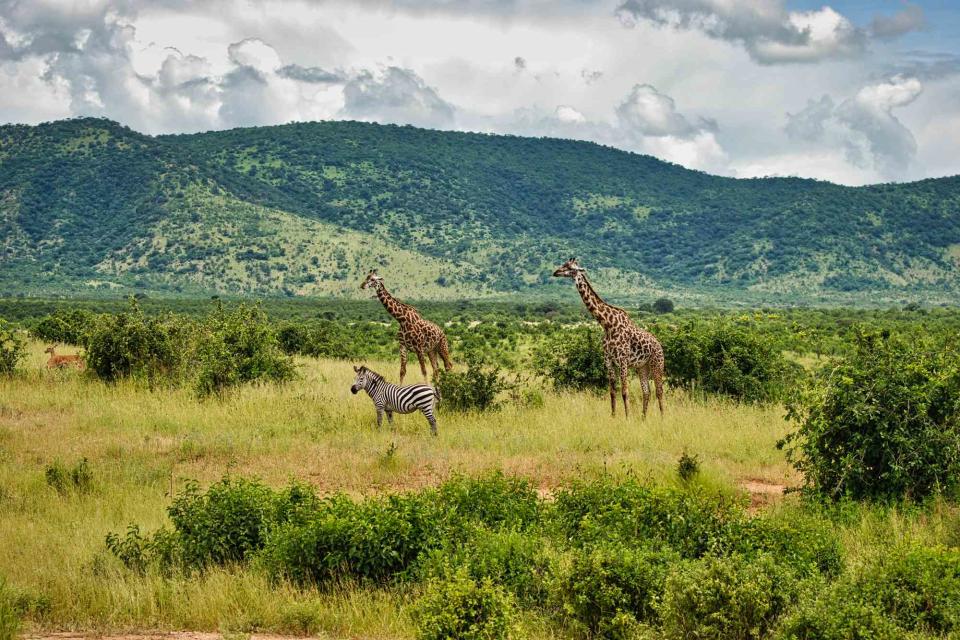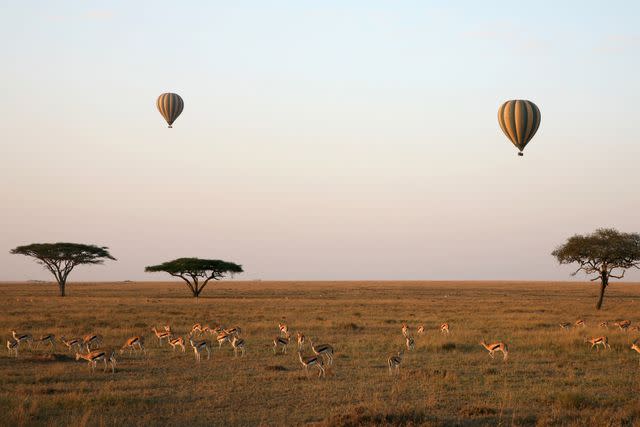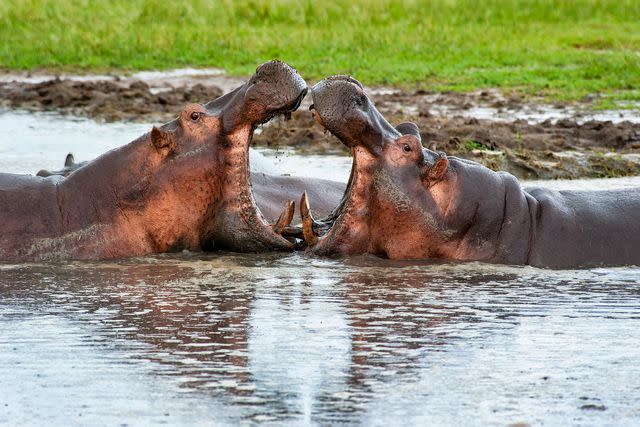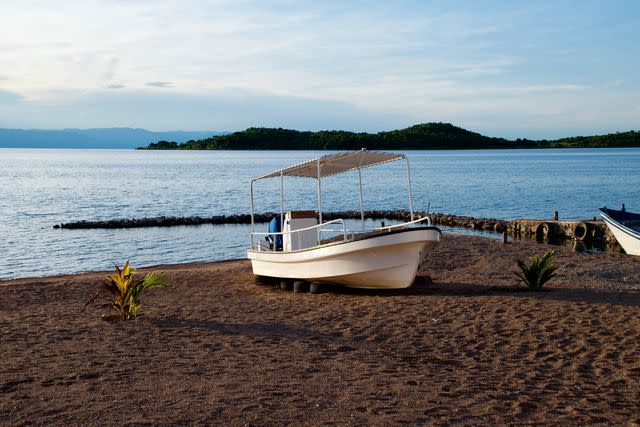I’ve Worked in Safari Travel for More Than 20 Years — These Are the 4 National Parks in Tanzania I Send Travelers To
A-List travel advisor Samantha Gordon recommends where to stay and what to expect.

sherly348 / 500px/Getty Images
Ruaha National Park, the largest protected wildlife area in Tanzania.For many first-timers to Tanzania, the game-filled plains of the Serengeti ecosystem and the sheer wonder of the Ngorongoro Crater are undoubtedly must-see destinations. But while these northern parks attract the most attention, travelers in the know are heading off the beaten track — to the remote corners of southern and western Tanzania. This is where you’ll find the country's two largest parks (Nyerere National Park and Ruaha National Park), as well as the rarely visited Katavi National Park and the stunning Mahale Mountains National Park, which is home to an extraordinary troop of chimpanzees and only accessible by boat.
As a safari expert, I'm sharing my recommendations for each of these secluded, wild places. Here's an overview of Tanzania's best under-the-radar national parks.
Nyerere National Park
Nyerere National Park is a 11,583-square-mile landmass in the larger Selous Game Reserve, affording a high degree of protection for its prodigious wildlife population. Only a handful of lodges exist here (for the time being), so game drives are blissfully peaceful. For those keen to get out of a 4WD vehicle, afternoons can be spent boating and fishing on the Rufiji River, observing birds and hippos, or taking a nature walk with a qualified safari guide. My favorite place to stay is Sand Rivers camp, with its private rooms perched on the high banks overlooking the Rufiji. For a proper safari adventure, you can also spend the night in Sand Rivers' gorgeous fly camp and eat dinner next to a campfire before retiring to your simple tent under a blanket of stars.

yenwen/Getty Images
A hot-air balloon safari over Tanzania.Ruaha National Park
Ruaha is possibly Tanzania’s best kept secret. Covering an area larger than Maryland, it's home to just 10 lodges — and a tenth of the world’s lion population, plus a whopping 450 different bird species. The best way to experience its sheer beauty, size, and emptiness is via a hot-air balloon ride. You have to wake up at dawn, yes, but then you're rewarded with a stunning sunrise followed by a calm flight over the pristine landscape, without a vehicle in sight. I recommend returning to the luxurious surroundings of Jabali Ridge camp to relax by the pool before your afternoon game drive.

guenterguni/Getty Images
Two male hippos in the remote Katavi National Park, in Tanzania.Katavi National Park
Due to rains and flooding, this remote park is accessible only five months of the year — and that means everything feels just a little bit wilder. Located in Tanzania's far west, Katavi National Park is much less visited than other national parks in the country. The local wildlife includes large herds of buffalos, zebras, giraffes, and elephants, and there are plenty of hippos and crocodiles. Predators such as cheetahs, leopards, lions, and hyenas can be found here, too, but don’t expect lots of cat sightings. The real draw of Katavi is its remoteness — there are so few other visitors that you'll feel like you have the park to yourself.

YolandaVanNiekerk/Getty Images
On the beach of Lake Tanganyika, in Tanzania.Mahale Mountains National Park
Mahale, the most beautiful of Tanzania’s national parks, lies on the eastern shore of Lake Tanganyika (the second-largest lake in the world by depth and volume, after Lake Baikal in Russia). The lush rain forest that rises steeply from the water’s edge is one of only two protected areas for chimpanzees in the country (the other is the nearby Gombe Stream National Park, made famous by Jane Goodall), plus it's home to the largest known population of eastern chimpanzees in the world. There are no roads or infrastructure within the park boundary, so the only access is by boat. The trekking can be tough (straight up and hot!), but is incredibly rewarding. I never thought I would match the experience of tracking gorillas in Rwanda and Uganda, but spending time in Mahale with chimpanzees came extremely close. I experienced the best guiding I have had in more than 20 years of African explorations. The head guide, Butati (pronounced to rhyme with Bugatti), was born in this park. He knows not only the names of all the 70-something chimps, but also their relationships, families, and characters quirks.
What's a day like at Mahale? Guests have an early breakfast and then get ready to trek, awaiting the radio call of rangers who alert the camp of the day’s first sighting. Then, they head straight out on foot in search of chimps. After the morning’s exertions (and, ideally, incredible wildlife sightings), there's nothing more inviting than a boat trip out onto Lake Tanganyika — I recommend diving into the crystal-clear waters as the best way to cool off.
Samantha Gordon is a member of Travel + Leisure's A-List and specializes in custom east and southern Africa trips. The experiences mentioned above can be arranged as part of a tailor-made itinerary by contacting her at sgordon@redsavannah.com.
For more Travel & Leisure news, make sure to sign up for our newsletter!
Read the original article on Travel & Leisure.

